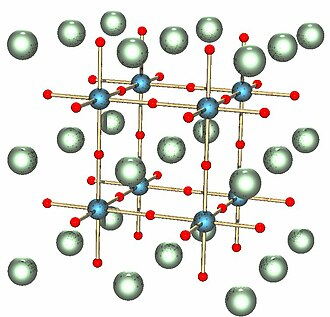1. What is "Pervoskite"?
Perovskite is the name of a particular type of crystal structure with the formula ABX3 . The name of this structure is "perovskite" because it was first discovered in calcium titanium oxide mineral called "perovskite" which was named after Russian mineralogist "Lev Perovski".
(structure perovskite | source- Energetics and Crystal Chemical Systematics among Ilmenite, Lithium Niobate, and Perovskite Structures1)
2. Why perovskite is more efficient?
Perovskites can function well in electronic devices even with many imperfections and impurities, unlike silicon, which requires extremely high purity to function well.
3. Perovskite solar cells potential
Perovskites have the potential to produce thinner and lighter solar panels operating at room temperature. Chinese solar module producer JinkoSolar achieved a 33.24% power conversion efficiency for a perovskite-silicon tandem solar cell based on n-type wafers. UK-based Oxford PV reached an efficiency of 28.6% for a commercial-size perovskite tandem cell and plans to ramp up manufacturing in 2024. The manufacturing cost for perovskite solar cells is currently comparable to crystalline silicon, and the future estimated cost is around $0.10 per watt. Perovskite solar cells can absorb a wider variety of colors in the solar spectrum and have potential for space applications.
Despite being more efficient perovskite cells are less stable and are prone to degradation. The lifespan of a perovskite cell is only 30 month maximum compared to conventional silicon solar cell with lifespan around 25- 30 years. Researchers at Princeton University has devised a way to enhance lifespan of these cells by 30 years. An ultra thin layer between sensitive layers has been introduced to prevent degradation making perovskite better option when compared to photovoltaics.


.png)
